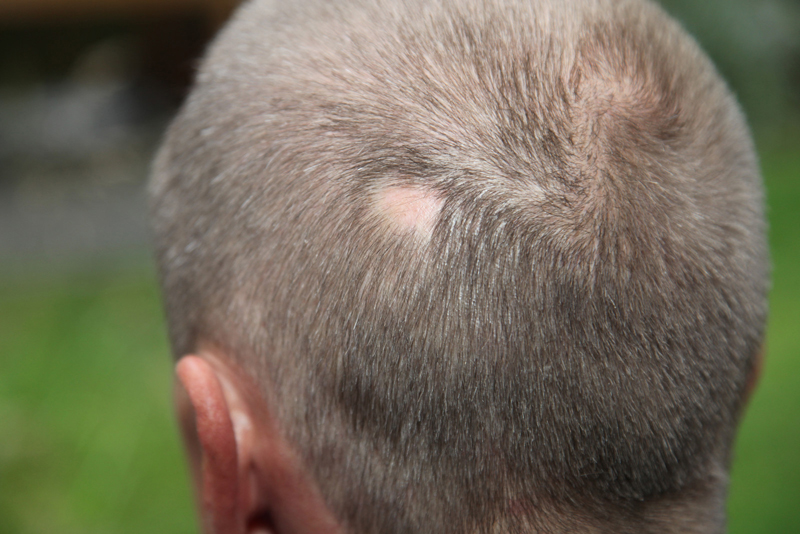Affecting 6.8 million people in United States, alopecia areata is a common autoimmune disorder that often leads to unpredictable hair loss. The disease develops when the body’s immune system incorrectly attacks the body’s own cells, here, the hair follicles, especially follicles within the scalp. There is no permanent cure for alopecia areata, although there are medical treatments that may inhibit the body’s autoimmune reaction in the scalp and encourage hair regrowth more quickly. Since there is no permanent treatment plan for this disease, medical billing and coding tasks for this condition can be challenging. Relying on an experienced medical billing company can help healthcare providers report alopecia areata diagnosis using the right ICD-10 codes.
In some cases, the hair loss can be extreme, leading to complete loss of hair on the scalp (alopecia totalis) or, in extreme cases, the entire body (alopecia universalis). The risk of developing alopecia areata is higher in people who have asthma, hay fever, thyroid disease, vitiligo (a condition in which patches of skin lose their color), pernicious anemia and Down’s syndrome. Genetic factors can also play a role. If a person under age 30 develops the disorder, it’s more likely due to genetic factors. According to Harvard Health, “Almost 40% of people younger than age 30 with alopecia areata have at least one family member who has been diagnosed with the same disorder.”
The hair grows back within 12 months or less in many people who suffer from small patch of hair loss. But the problem can last longer and be more severe, causing alopecia totalis or alopecia universalis.
Types of Alopecia Areata
The three well-known types of alopecia areata are:
- Alopecia areata: A common patchy baldness that can develop anywhere on the body, including the scalp, beard area, eyebrows, eyelashes, armpits, inside your nose, or ears.
- Alopecia totalis: A person losing all hair on the scalp, making it completely bald.
- Alopecia universalis: Rare condition where a person loses all hair, leaving the entire body hairless.
Symptoms
Commonly, alopecia areata causes:
- Small round or oval patches of baldness on the scalp
- Area of bald skin looks smooth and normal
In most cases, there are no other scalp symptoms.
Other symptoms may include:
- Mild itching, tingling, and tenderness in the affected area
- A burning sensation in the affected area
- Abnormalities in the surface of the fingernails (tiny pits or dents, grooves, superficial splitting, or an abnormal area of redness)
Insurance Reimbursement
Getting reimbursed for the medical treatments for alopecia areata can present a challenge since no treatments are currently approved by the FDA for this disease, according to the National Alopecia Areata Foundation (NAAF). In addition, there is a tendency for payers to consider the treatments as merely “cosmetic”, rather than medically necessary, and use this description to deny claims.
Claims should be submitted with the right ICD codes. The diagnostic codes for alopecia areata are from L63.0 to L63.9 depending on the type of alopecia areata:
- L63: Alopecia areata
- L63.0: Alopecia (capitis) totalis
- L63.1: Alopecia universalis
- L63.2: Ophiasis
- L63.8: Other alopecia areata
- L63.9: Alopecia areata, unspecified
According to www.headcovers.com, coverage depends on the insurance company. Most will cover treatment when hair loss is caused by an underlying medical issue. Some payers cover hair loss treatment based on the cause and extent of the bald patches.
NAAF offers the following tips on getting reimbursement for alopecia areata:
- Knowing the patient’s insurance policy and what it covers
- Knowing how the policy deals with a specific treatment
- Knowing whether prior authorization is needed for a therapy
- Submitting accurate clinical documentation – the necessary documentation should be submitted showing that the case meets the insurance provider’s guidelines and meets medical necessity requirements
- Appeal denials: The most common reason for claim denials is because the payer designates a therapy as cosmetic, not medically necessary, and/or being experimental or investigational in alopecia areata and prescribed as off-label use. As about 40% of appeals are successful, so NAAF urges appealing a denial at every level.
HCPCS codes are used to report supplies, equipment, and devices such as wigs provided to patients. The HCPCS billing codes for wigs are S8095 and A9282.
With all these challenges, the best option to submit accurate claims and obtain optimal reimbursement is to rely on an experienced medical billing and coding company. Such firms will have expert medical coders and billing personnel who are familiar with the codes for alopecia areata diagnosis and treatment as well as the guidelines of insurance companies.




